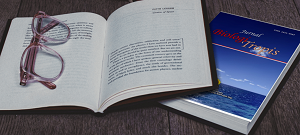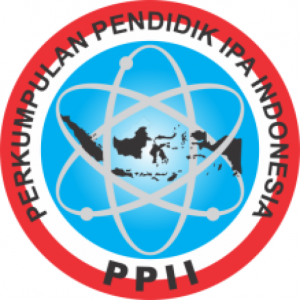Tapanuli Orangutan Feeding (Pongo tapanuliensis) In Sitandiang Hamlet, Bulu Mario Village, Sipirok District, South Tapanuli
Authors
Adinda Patricia Adelina Sinaga , Sri Catur SetyawatiningsihDOI:
10.29303/jbt.v25i1.8243Published:
2025-03-15Issue:
Vol. 25 No. 1 (2025): Januari - MaretKeywords:
Conflict, food, orangutan tapanuli, mitigation.Articles
Downloads
How to Cite
Downloads
Metrics
Abstract
The tapanuli orangutan (Pongo tapanuliensis) is an endemic orangutan species found exclusively in the Batang Toru forest ecosystem, North Sumatra. Studying their natural diet is crucial to supporting conservation efforts for this critically endangered species. This research was conducted in Sitandiang Hamlet, Bulu Mario Village, Sipirok Sub-district, South Tapanuli Regency, with the aim of inventorying the types of food consumed by tapanuli orangutan and analyzing their feeding patterns in their natural habitat. The methods used included field surveys, interviews with local communities, and documentation. The findings revealed that tapanuli orangutan utilize a variety of plant resources, such as fruits, leaves, flowers, and tree bark. Their feeding patterns show a reliance on the availability of seasonal fruits, with an adaptation to consuming vegetative plant parts during off-fruit seasons. Local community knowledge about orangutan food sources also plays an important role in preserving their habitat. This study provides insights into ecosystem-based conservation management and emphasizes the importance of strengthening collaboration with local communities to support the sustainability of tapanuli orangutan populations in this region.
References
Adnyani MRD, Parwata MOA, Negara MS. 2017. Potensi Ekstrak Daun Nangka (Artocarpus heterophyllus Lam.) sebagai Antioksidan Alami. Jurnal Harian Regional 1 (1): 10-15.
Aisyah Y, Setiawan B, Damayanti E. 2018. Phytochemical and Antioxidant Activity of Shorea Resin from Borneo Island. Natural Product Research 32(2): 155-162.
Ancrenaz M, Whittaker RA, Marshall AJ, Melnick DJ. 2004. Orangutans and Their Habitats. The Ecological Society of America 15(5): 123-145.
Anwar MA, Harahap AA, Zainuddin A. 2021. Phytochemical Properties and Biological Activities of Spondias pinnata. Journal of Medicinal Plants Research 15(3): 56-63.
Arumugam P, Manjula P. 2019. Phytochemical Analysis and Bioactivities of Parkia speciosa (Petai) Pods. Journal of Pharmacognosy and Phytochemistry 8(4): 2047-2052.
Aveling CP dan Cuthill IC. 2020. Nutritional Ecology of Orangutans: Implications for Conservation. Journal of Animal Ecology 89(6): 1543-1554.
Azhari A, Muthmainnah S. 2021. The Potential of Kuweni (Schleichera oleosa) as a Natural Source of Antioxidants and Antimicrobial Agents. Asian Journal of Pharmaceutical and Clinical Research 14(3): 1-6.
Aziz A, Ahmad RJ. 2024. Bioprospeksi Keruing Gunung (Dipterocarpusretusus Bl) Sebagai Antibakteri Dan konservasinya Di Taman Nasional Gunungrinjani. Jurnal Tambora 8(1): 1-10.
Bhadani A, Kumar S. 2016. Phytochemical Analysis and Antimicrobial Activity of Symplocos celastrifolia. Asian Pacific Journal of Tropical Disease 6(1): 24-29.
Bhat R dan Poojary B. 2017. Saponins: Properties, Applications and Health Benefits. Journal of Nutrition & Food Sciences 7(5): 1-6.
Christine EMH, Ahmad S, Dian R. 2021. Aktivitas Harian Orangutan Kalimantan (Pongo pygmaeus) Pasca Pelepasliaran di Hutan Lindung Gunung Tarak, Kalimantan Barat. Jurnal Zoo IndonesiaI, 27(2): 91-98.
CITES. 2019. Convention on International Trade in Endangered Species of Wild Fauna and Flora. http://www.cites.org. diakses pada 8 Februari 2024.
Dapkus B, Houghton RA, Laffan S. 2017. Nutritional Ecology of Orangutans: Dietary Composition and Feeding Behavior. American Journal of Primatology 79(4): 67-78.
Davis MJ, Whelan P. 2017. Potential Applications of Insect Protein in Food Production: The Case of Lymantria dispar. Food Research International 99(1): 876-885.
Dewi C, Rohula U, Nur HR. 2012. Aktivitas Antioksidan dan Antimikroba Ekstrak Melinjo (Gnetum gnemon L.). Jurnal Teknologi Hasil Pertanian 5(2): 74-81.
Gunawan, Tatik C, Sobir, Sulistijorini. 2016. Fitokimia Genus Baccaurea spp.. Bioeksperimen 2(2): 96-110.
Haddad A, Hari P, Muhammad SA. 2017. Perilaku Makan dan Jenis Pakan Orangutan (Pongo Pygmaeus) di Yayasan International Animal Rescue Indonesia (YIARI) Kabupaten Ketapang, Kalimantan Barat. Jurnal Hutan Lestari 5(2): 300-306.
Hanum F, Nugrahani EH, Susanti S. 2015. Pemanfaatan Sumber Daya Alam Terbarukan dalam Modal Sewa Ekonomi. Jurnal Manajemen dan Agribisnis 14(2): 57-70.
Hartono S, Wibowo A, Hidayati SN. 2020. Phytochemical Analysis and Biological Activities of Macaranga bancana. Journal of Medicinal Plants Research 14(8): 148-155.
Hasan N. 2018. Tannins: A Review on Their Chemical Properties and Biological Activities. International Journal of Food Properties 21(1): 2070-2086.
Hidayat T, Taufiq M, Abdurrahman A. 2021. Phytochemical Analysis and Biological Activities of Syzygium Polyanthum Leaves. Journal of Medicinal Plants Research 15(6): 97-104.
Ismail MR, Saari N, Ahmad FB. 2019. Chemical Composition and Biological Activities of Litsea cubeba (Lour.). Journal of Essential Oil Research 31(3): 263-270.
IUCN. 2017. IUCN Red List of Threatened Species. Diakses dari www.iucnredlist.org pada 8 Februari 2024.
Kumar P, Kumar S, Kumar A. 2020. Phytochemical Analysis and Biological Activities of Osbornia octodanta. Journal of Medicinal Plants Research 14(2): 16-23.
Kurniawan A, Widiastuti T, Rachmawati H. 2020. Phytochemical Screening and Biological Activities of Phoebe sp. Journal of Medicinal Plants Research 14(7): 145-152.
Kuswanda W. 2018. Update Sebaran Habitat dan Populasi Orangutan tapanuli (Pongo tapanuliensis). Laporan Sintesa Penelitian. Medan: Balai Litbang LH dan Kehutanan Aek Nauli.
Laing A, Kenneth P, Jahan S, Katie W. 2012. Ape Eviction? These Orangutans are Losing More Than Their Homes. Diakses dari http://adapt136.ucsc.edu pada 29 November 2024.
Marsh LK.dan Smith TE. 2020. Nutritional Ecology and Health of Orangutans: Implications for Conservation. American Journal of Primatology 82(6): 70-80.
Matsuura K, Nishida T. 2015. Chemical Composition and Antimicrobial Activity of Termite Secretions. PLOS ONE 10(5): 1-15.
Moustafa AM, Ezzat, SM, El SAM, Labib RM. 2014. Phytochemical and Biological Studies of Ficus benjamina Leaves. Journal of Pharmaceutical and Biomedical Analysis 89(1): 125-131.
Nabavi SF. 2015. Flavonoids and Their Effects on Human Health. Current Medicinal Chemistry 22(18): 2182-2194.
Nasution DPS, Abdul L, Mawardi, Ekariana SP. 2023. Keanekaragaman Vegetasi Tumbuhan Pakan Orangutan Sumatera (Pongo abelii). Jurnal Pendidikan Sains dan Teknologi 11(1): 119-128.
Nater A, Mattle GMP, Nurcahyo A, Nowak MG, Manuel M, Desai T, Krutzen M. 2017. Morphometric, Behavioral, and Genomic Evidence for a New Orangutan Species. Current Biology 27(22): 3487-3498.
Noor NM, Abdullah R, Ismail N. 2019. Phytochemical Analysis and Biological Activities of Rhodomyrtus tomentosa. Journal of Medicinal Plants Research 13(2): 22-30.
Ola MS, Ayo JO, Durodola OA. 2019. Nutritional Value and Health Benefits of Banana (Musa acuminata) : A Review. Food Science & Nutrition 7(9): 3144-3153.
Pasaribu SE, Rizki EH. 2018. Partisipasi Kelompok Pecinta Alam Forester Tapanuli Bagian Selatan Dalam Pelestarian Orangutan sumatera (Pongo Abelii) Di Cagar Alam Dolok Sibual-Buali Kabupaten Tapanuli Selatan. Jurnal Ilmu Pengetahuan Sosial 4(1): 17-23.
Prabowo HE, Widiastuti T, Nuryanto A. 2020. Phytochemical Screening and Biological Activities of Ficus fitulosa. Journal of Medicinal Plants Research 14(9): 111-118.
Prasain, JK, Stefanowicz, P. 2019. Chemical Constituents of Rinorea Species and Their Potential Biological Activities. Journal of Natural Products 82(7): 1985-1992.
Prasetyo D, Yokyok H, Wanda K, Jito S. 2021. Population Status of Tapanuli Orangutan (Pongo tapanuliensis) within the Renewable Energy Development and its Management Implications. Forest and Society 5(2): 478-493.
Prasetyo YT, Widiastuti T, Nugroho AS. 2019. Phytochemical analysis of Artocarpus species and their medicinal potential. Journal of Medicinal Plants Research, 13(5): 102-108.
Pratiwi D, Widyastuti T, Nugroho A. 2021. Phytochemical Analysis and Biological Activities of Syzygium polyanthum. Journal of Medicinal Plants Research 15(1): 34-41.
Purnamasari R, Nugroho A, Widiastuti T. 2021. Phytochemical Analysis and Biological Activities of Ficus benjamina. Journal of Medicinal Plants Research 15(5): 90-97.
Putro HR, Dones R, Harnios A, Rinekso S, Wanda K, Fitri N, Dede AR, Nandi K, Joko M, Yun Y, Fahmi H, Fadillah RNP, Yuri DS. 2019. Ekologi Orangutan (Pongo tapanuliensis). Bogor: Pokja Batang Toru.
Rahman MM, Hossain MM, Begum F. 2021. Phytochemical Properties and Biological Activities of Castanopsis inermis. Journal of Medicinal Plants Research 15(1): 45-52.
Rahmasiahi, Shabran H, Tika Y. 2023. Skrining Fitokimia Ekstrak Metanol Daun Pandan Wangi (Pandanus amarillyfolius Roxb). Journal of Pharmaceutical Science and HerbalTechnology 1(1): 33-39.
Rizal A, Setyowati EM, Catur R. 2019. Phytochemical Content and Toxicity of Jengkol (Archidendron pauciflorum). Journal of Applied Pharmaceutical Science 9(5): 108-113.
Russon AE. 2017. Dietary Habits of Orangutans and Their Impact on Health. Primates 58(1): 1-11.
Sari AR, Sulistyowati L. 2020. Phytochemical Analysis and Antioxidant Activity of Tetramerista glabra. Indonesian Journal of Pharmaceutical Sciences 5(1): 10-17.
Sari DR, Setiawan H, Suhendi A. 2020. Phytochemical Analysis and Biological Activities of Adinandra dumosa. Journal of Medicinal Plants Research 14(11): 160-167.
Sari DR, Widiastuti T, Anwar M. 2020. Phytochemical Analysis and Biological Activities of Arenga pinnata. Journal of Medicinal Plants Research 14(6): 111-118.
Schaik CP. 2003. Why are orangutans so frugivorous?. Inggris: Cambridge University Press.
Schaik CP, Marc A, Gwendolyn B, Birute G, Cheryl DK, Ian S, Akira S, Sri SU, Michelle M. 2003. Orangutan Cultures and the Evolution of Material Culture. Science 299(5603): 102-105.
Sharma A, Sharma P, Thakur A. 2020. Phytochemical Composition and Biological Activities of Pimenta officinalis. Journal of Medicinal Plants Research 14(4): 48-55.
Simanjuntak P, Nursyamsi D, Wibowo A. 2020. Phytochemical Analysis and Biological Activities of Garcinia celebica. Journal of Medicinal Plants Research 14(10): 128-135.
Siregar DI, Anita Z, Pindi P. 2015. Pemetaan Daerah Rawan Konflik Orangutan Sumatera (Pongo Abelii) dengan Manusia di Desa Sekitar Cagar Alam Dolok Sibual-Buali. Peronema Forestry Science Journal
Siregar RAD, Riki R. 2018. Identifikasi Sarang Orangutan tapanuli (Pongo tapanuliensis) di Kawasan Cagar Alam Dolok Sibual-buali. Journal Education and Development 6(2): 31-36.
Sudarsono S, Hidayati SN, Nasution SN. 2020. Phytochemical screening and biological activity of Omalanthus populneus. Journal of Medicinal Plants Research 14(2): 34-40.
Sudhakar C, Singh R. 2021. Nutraceutical Importance of Natural Products for Health. Journal of Ethnopharmacology 275(1): 1-12.
Sumardi S, Yuliana ND, Haryanto M. 2018. Phytochemical Screening and Biological Activities of Campnosperma auriculatum. Journal of Medicinal Plants Research 12(4): 66-72.
Supriatna, Jatna, Edy HW. 2000. Panduan Lapangan Primata Indonesia. Jakarta : Yayasan Obor Indonesia.
Syafriana V, Rachmatiah T, Utama NW. 2020. Aktivitas Antibakteri Ekstrak Metanol Kulit Batang Meranti Sarang Punai (Shorea parvifolia Dyer) Terhadap Staphylococcus aureus dan Propionibacterium acne. Jurnal Farmasi Udayana 2(1): 160-170.
Tarszisz E, Sean T, Mark EH, Helen CM , Adam JM. 2018. Gardeners of the Forest: Effects of Seed Handling and Ingestion by Orangutans on Germination Success of Peat Forest Plants. Biological Journal of the Linnean Society 123(1): 125-134.
Van SCP, Knott CD, Melnick DJ. 2009. Orangutans: Geographic Variation in Behavior, Ecology, and Conservation. New York: Springer.
Wich SA, David G, Nicola A, Marc A, Alessandro B, Stephen B, Lisa C, Roberto AD, Andi E, Gabriella MF, Benoit G, Simon JH, Isabelle L, Andrew JM, Anita N, Elis M, Nardiyono, Anton N, Kisar O, Adventus P, Purnomo, Andjar R, Dessy R, Adi HS, Imam S, Carel PS, Jamartin S, Stephanie S, Eddy S, Amat S, Albertus T, Graham U, Sri SUA, Erik PW, Erik M. 2012. Understanding The Impacts Of Land-Use Policies On A Threatened Species: Is There A Future For The Bornean Orangutan?. PLOS ONE 7(11): 1-10.
Widyastuti T, Anwar M, Nugroho A. 2021. Phytochemical Analysis and Biological Activities of Eugenia spp. Journal of Medicinal Plants Research 15(2): 123-130.
Yadav A, Choudhary D, Kumar A. 2015. Phytochemical Analysis and Antioxidant Activity of Shorea robusta. International Journal of Pharmacognosy and Phytochemical Research 7(4): 797-802.
Yantoko MY, Siti S, Yohanes EG. 2022. Aktivitas Makan Orangutan Kalimantan (Pongo Pygmaeus Wurmbii) di Taman Nasional Tanjung Puting Wilayah Camp Leakey Kab. Kotawaringin Barat Sebagai Penunjang Materi Konservasi. Jurnal Ilmu Pertanian 16(2): 115-125.
Yuniar SD, Susilowati H. 2021. Phytochemical Screening and Antioxidant Activity of Ethanol Extract of Rengas Leaves (Gluta renghas). Journal of Pharmaceutical Research International 33(1): 19-26.
Zukhri S, Rahmi N. 2019. Uji Efektivitas Antibakteri Ekstrak Etanol Daun Karet Kerbau (Ficus Elastica Roxb. Ex Hornem.) Terhadap Bakteri Staphylococcus aureus. Jurnal Ilmu Kesehatan 14(1): 58-70.
License
Copyright (c) 2025 Adinda Patricia Adelina Sinaga, Sri Catur Setyawatiningsih

This work is licensed under a Creative Commons Attribution 4.0 International License.

Jurnal Biologi Tropis is licensed under a Creative Commons Attribution 4.0 International License.
The copyright of the received article shall be assigned to the author as the owner of the paper. The intended copyright includes the right to publish the article in various forms (including reprints). The journal maintains the publishing rights to the published articles.
Authors are permitted to disseminate published articles by sharing the link/DOI of the article at the journal. Authors are allowed to use their articles for any legal purposes deemed necessary without written permission from the journal with an acknowledgment of initial publication to this journal.


























